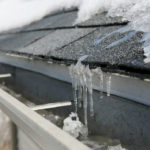
8 Easy Ways to Grow Green Grass
Having a lush green lawn to be proud of is possible if you know the proper methods. Unfortunately, at this time of year, our lawns can start to look less than perfect. If your grass has become yellowed from a lack of water or is overrun with crabgrass or dandelions, you may be wondering what you did wrong. However, there are ways to get your lawn looking its best again and ensure it is getting the best care.
Achieving a lush, green lawn goes beyond simply learning how to stripe the lawn and how to plant grass seed. Below, we will look at eight steps to make your grass look greener than ever. We’ll cover topics such as fertilizer, weed control, and aeration. Once you’re done, the grass in your yard will truly be the envy of your neighbors. Here’s how to get it there.
In order to get the most out of your lawn, learning how to add lime could be advantageous. Deciding if grass seed or sod is the better option for your lawn is also useful. For more information, check out how to put lime on your lawn and find out which is better.
Have you decided to join No Mow May? There are seven reasons to persuade you to abstain from mowing your lawn this month. Additionally, here are seven ways to reuse the grass clippings after mowing.
Tips for Enhancing the Color of Your Lawn
1. Become familiar with the type of grass in your area. Different grass varieties can be found in various regions, and each one has its own needs regarding nutrients, sunlight, and height. To get your grass greener, you should first figure out what type it is, and this will give you a better idea of what it needs.
In the northern states of the United States, it is typical to find varieties of cool-season grasses. Conversely, warm-season grasses can be found in the south. This knowledge can help you narrow down your options. If you’re still uncertain, contact a local garden store for assistance.
2. Assess your soil. The next stage is to evaluate the characteristics of your soil. This, combined with the type of grass you have, can help you identify what is missing for optimal growth. Soil test kits are widely available.
The exact soil requirement for your grass will depend on the type, yet as a general rule, it should have a slightly acidic pH level of 6-7 and a plentiful amount of nitrogen, phosphorus, and potassium. It’s important to remember that cool-season grasses prefer a slightly higher pH than warm-season grasses. It is suggested that you examine your soil yearly to ensure the minerals are adequate.
3. Get your fertilizer. Realizing what is necessary, you can purchase the most suitable fertilizer for your lawn. Generally, fertilizer contains nitrogen, potassium, and phosphorus. However, the elements and proportions differ to meet distinct needs. Therefore, when selecting a fertilizer, seek one that will even out your mineral levels. Additionally, some fertilizers come with helpful components, such as iron supplements to inspire greener growth, and some with weed killer.

The timing of when you should fertilize your lawn is dependent on the type of grass you have. Cool-season grass should be fertilized in the spring and autumn, while warm-season grass should be fertilized more regularly throughout the summer. It would help if you were sure to follow the directions on the fertilizer packaging regarding the amount to use and application frequency. Over-fertilizing can harm the grass and cause scorch marks, so it is essential to be mindful.
If you don’t want to use chemicals, you can opt for natural alternatives for your lawn. A thin layer of compost on the grass in the early spring can help provide nutrients to the soil. Additionally, organic lawn fertilizers can be purchased.
4. Have a regular watering regimen for your grass — During the hot summer months, you should give your lawn about an inch of water each week for it to thrive. Doing this during the early morning is best so the sun does not evaporate the moisture. Establish a watering system schedule to keep up with this and take advantage of rainfall to save water.

If you’ve sown new grass seeds, you will need to be more vigilant when watering them. The ground should be kept damp initially, with 1-2 waterings per day, and then less frequently once the grass grows to 1-2 inches.
5. Reap the most benefits from your mower — Keeping your lawn even and healthy is essential, but don’t over-cut. Longer grass blades will help protect the roots from the sun and also help promote root growth. The height you should set your mower to depends on your grass type, and Cool-season grasses should be cut shorter than warm-season grasses. Be sure not to take off more than a third of the grass. It may seem odd, but cutting it to the right height can help it to stay greener.
Occasionally, it’s essential to examine the mower blades to ensure they are in excellent condition. Over time, they may become dull and tear the grass rather than cutting it, thus leaving the grass with jagged tops that turn brown or white. This will detrimentally affect the lawn’s appearance. To prevent this from happening, it is important to sharpen the blades or replace them for a new start. For more information, look at this guide on how to sharpen lawn mower blades.
6. Stay ahead of weeds — Prevent weeds from obstructing the vision of having the most verdant lawn in the area. Dig any observed weeds out with a spade — bear in mind to pull the roots up as well. If you’d rather not get your hands in the dirt, you can also take care of individual weeds using a specialized weed killer, which is easily accessible in most gardening stores. Pick one that is suitable to your type of weed and put on the appropriate protection.
Weeds can be a nuisance, but if you want to keep them away, you may want to consider using a fertilizer that has weed killer as an ingredient. On the other hand, if you do not wish to use chemicals on your lawn, corn gluten meal is a natural choice that can both eliminate weeds and nourish your grass simultaneously.
7. Patch up any problem areas — If you’ve been researching how to get rid of moles or have noticed some brown patches in your lawn, don’t fret. You can easily patch up any issues with new grass seed. First, ensure the seed is compatible with the turf already present. Then, clear away any dead grass from the area you plan to repair and till the top ¼ inch of dirt. Now you can manually spread the grass seed, cover it with a thin layer of soil, and routinely water the area.
If your lawn needs some freshening up, overseeding is an option. Start using a rake to spread a thin layer (¼ inch) of soil over the grass. Then, use a spreader to distribute the fresh grass seed evenly. After that, fertilize and water the new seeds, and consider covering them with mulch or compost to protect them from the elements.
8. Loosen the soil — To achieve a lush, green lawn, periodically aerate the soil. Heavy foot traffic can lead to soil compaction, reducing oxygen and water access for the grassroots. By aerating the ground, it will be easier for the grass to access the air and water it needs to grow, and this will help the lawn flourish.
When and how often to aerate your lawn depends on your grass seed variety. For cool-season grass, the ideal time is the start of spring or autumn, while warm-season grass should be aerated in late spring or early summer. If your lawn could be doing better or it gets a lot of traffic, aerate it annually. On the other hand, if it’s in good shape, every 2-3 years should be sufficient.
Aerators can be bought or rented, and they have been pushed around similarly to lawnmowers. The advantages of using one are pretty remarkable.
By following these tips, your lawn will soon be the envy of your neighbors. However, it is essential to remember that continual upkeep is necessary for keeping your lawn in good condition. Our top tips for surviving the heatwave while watering your lawn, recognizing the seven signs of grass being cut too short, and removing grass stains from your clothes can be found here, here, and here.
If you need advice on planting, peruse our guides on cultivating sunflower seeds and the timing of it growing potatoes and cultivating tomatoes in containers. It would help if you also looked into pruning hydrangeas, caring for an orchid, and caring for air plants.



